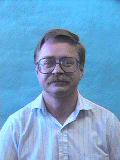|
||
|
|
University of Southern
California |
|
|
Abstract: Traditional turbulence models have been developed for incompressible, constant density flows governed by Navier-Stokes equations written in the inertial frame of reference. These assumptions must be relaxed when additional physical phenomena are present. For instance, effects of compressibility, stratification (both stable and unstable), electromagnetic fields, as well as transformations to non-inertial systems of coordinates change the governing equations by introducing additional terms in the momentum equation and/or extra equations for the density, energy, temperature, magnetic field in MHD, etc. The most obvious complication in large eddy simulations (LES) for such flows is the presence of additional unclosed terms in the equations, beyond the classical subgrid-scale (SGS) stress in the momentum equation, that require new modeling assumptions. The models for the additional unknowns are usually based on analogies with modeling the SGS stress, e.g., for a SGS heat flux known as the Reynolds analogy. Even in situations that the equations of motion are changed by the addition of merely linear terms that do not require modeling, as is the case of turbulence in a rotating frame of reference, models for the seemingly unmodified SGS stress term must be changed to capture the new physics. The classical approaches to modeling new physical phenomena will be reviewed and a competing technique based on the Truncated Navier-Stokes (TNS) equations will be described. The TNS method has a potential advantage over classical methods in that it is universal, being applicable in the same form to turbulent flows with different physics, without a need for new closure assumptions. It has been implemented previously to simulate classical "simple" flows: isotropic turbulence and channel flow, and later validated for several physically complex flows, including compressible turbulence. Few examples of application of TNS to physically complex turbulent flows will be reviewed: Rayleigh-Benard convection, rotating turbulence, and stably stratified flows. |
||
